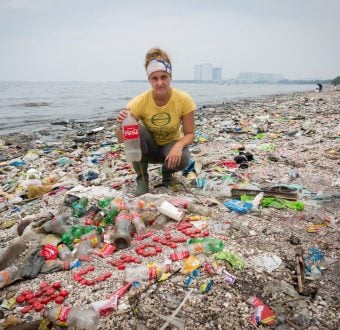Today Greenpeace launched a new Google mapping tool that allows communities to see for the first time if they live in the “vulnerability zone” of one of 483 high risk chemical plants. The interactive maps show the distance a poison gas cloud could travel as well as examples of safer alternatives. The URL for the mapping site is at: http://usactions.greenpeace.org/chemicals/map/
Each of these plants put 100,000 or more people at risk of a poison gas disaster either by accident or terrorist attack. Together all of these plants put more than 110 million Americans at risk. When he was in the Senate, President Obama called these facilities “stationary weapons of mass destruction spread all across the country.”
“For more than a decade chemical companies have reported to the EPA how many people they put in danger of a poison gas disaster. Now Greenpeace is making sure that the public can find out if they are one of the millions in the danger zone of a poison gas facility,” said Greenpeace Policy Analyst John Deans.
The highest risk facility in the U.S. is the Kuehne Chemical plant in South Kearny, New Jersey. Kuehne puts 12 million people in New Jersey and New York at risk of a chlorine gas disaster, and yet the Clorox Company, which is in the same business as Kuehne, announced in 2009 that they are converting all of their U.S. facilities. Kuehne, however, has dragged its feet for more than a decade since 9/11 and has even asked for $50 million in government handouts. In 2010 Kuehne finally announced plans to convert but they have yet to give the surrounding communities a timeline. In 2003 Greenpeace urged to Kuehne to convert and again in 2010 when Greenpeace conducted a citizen’s inspection of their plant and sent the results to the Department of Homeland Security.
While hundreds of plants have converted since 9/11, proving that safer alternatives are feasible and cost effective, the large majority of highest risk plants have done little. When he was in the Senate, President Obama said, “Each one of these methods reduces the danger that chemical plants pose to our communities and makes them less appealing targets for terrorists.”
In 2009 the House of Representatives adopted a bill that would have required the conversion of high risk plants to safer alternatives were ever feasible. The Obama administration’s Department of Homeland Security and EPA have repeatedly asked Congress to require the highest risk plants to use safer alternatives. In response, Republicans in Congress and the chemical lobby have shamelessly blocked that legislation. “It’s time for our government to ensure that safer chemical processes are the norm, not the exception, at all high risks chemical plants,” said Greenpeace Legislative Director Rick Hind.
Given the failure of Congress to act, a coalition of more than 100 labor, public health, environmental justice and public interest groups have called on President Obama to implement never-used authority in the Clean Air Act to eliminate these hazards. On October 26, 2011 an EPA advisory committee on environmental justice voted to recommend that the EPA use their authority under the Clean Air Act to eliminate these hazards. In their letters, the groups cited a 2002 EPA proposal to use this authority. The EPA proposal even included plans to announce it at the White House but it was ultimately scuttled by President Bush following meetings with the chemical lobby. “President Obama should now revisit the 2002 EPA proposal and begin the elimination of these needless risks that continue to endanger millions of Americans,” said Deans.
###
Contact: John Deans, Greenpeace Toxics Campaigner, 207-319-6850
Center for American Progress published a survey that identified 284 facilities that switched to safer and more secure technologies while frequently saving money. http://www.americanprogress.org/issues/2006/04/b681085_ct2556757.html
Coalition letter to President Obama on using the Clean Air Act to prevent chemical disasters: http://research.greenpeaceusa.org/index.php?a=view&d=6002
Environmental Justice letter to EPA about federal advisory committee recommendation to use the Clean Air Act to prevent chemical disasters: http://research.greenpeaceusa.org/index.php?a=view&d=6007

